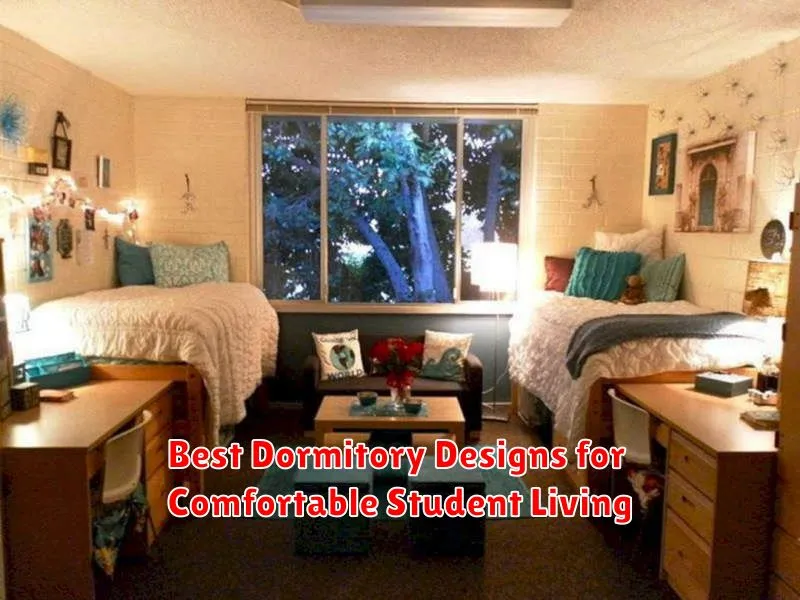Finding the best dormitory designs is crucial for comfortable and productive student living. A well-designed dormitory can significantly impact a student’s academic success, mental well-being, and overall quality of life. This article explores the best dormitory designs, offering insights into key features and innovative approaches that prioritize student comfort and create a conducive learning environment. Whether you’re a student searching for the ideal dorm, a parent concerned about your child’s living arrangements, or a university administrator seeking to improve student housing, understanding the elements of effective dormitory design is essential.
From space-saving furniture and clever storage solutions to communal areas that foster social interaction, this guide will cover the essential aspects of best dormitory designs. We will delve into factors like lighting, ventilation, and noise reduction, as well as the importance of creating a sense of community and belonging within the dormitory environment. Discover how innovative dormitory designs are transforming student living, promoting a positive and productive experience for students pursuing higher education. Explore the best dormitory designs and unlock the potential for a truly comfortable and enriching student life.
Open Space Shared Rooms

Open space shared rooms offer a communal living experience, fostering a sense of camaraderie among residents. These rooms typically feature a large, undivided space accommodating multiple students. Privacy is often addressed through strategic furniture placement, such as dividers or individual study nooks.
Benefits of open space shared rooms include increased social interaction and collaborative learning opportunities. These designs are generally more cost-effective than private rooms, making them an attractive option for budget-conscious students.
However, considerations must be made for noise levels and personal space. Clear expectations and shared agreements among roommates are crucial for a harmonious living environment.
Pros and Cons of Open Space Shared Rooms
| Pros | Cons |
|---|---|
| Increased social interaction | Limited privacy |
| Collaborative learning opportunities | Potential for noise disruptions |
| Cost-effective | Requires roommate compatibility |
Private Single Units
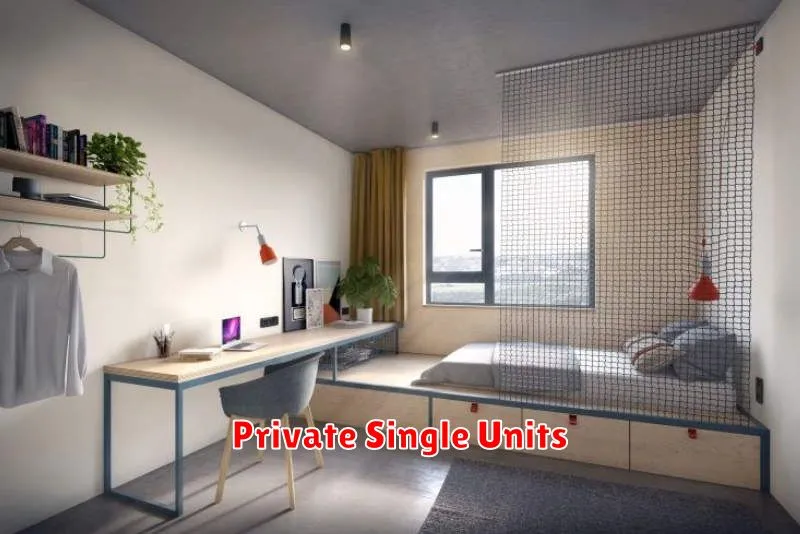
Private single units offer students the highest level of privacy and independence. These units typically include a private bedroom, study area, and in some cases, a private bathroom and kitchenette. This setup allows students to focus on their studies and personal needs without the distractions of roommates.
Key benefits of single units include enhanced concentration, personalized space control, and increased security. However, they often come at a higher cost compared to shared rooms. Students should carefully weigh their budget and preferences when considering this option.
Considerations for Private Single Units:
- Size and Amenities: Units vary in size and included amenities, so compare options carefully.
- Cost: Single units are typically the most expensive housing option.
- Social Interaction: While privacy is a benefit, students should be mindful of potential social isolation and seek out opportunities for interaction.
Hybrid Living Styles
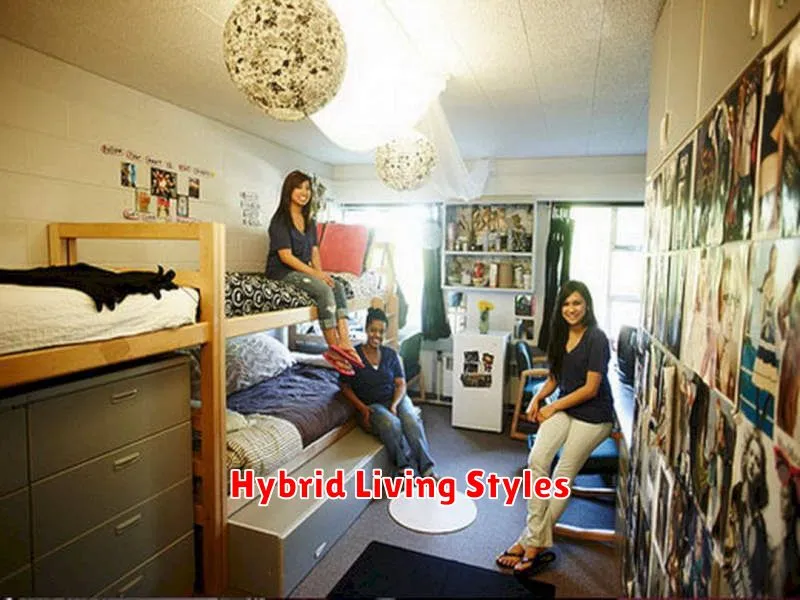
Hybrid living styles in dormitories cater to the evolving needs of students, offering a blend of private and communal spaces. This approach recognizes the importance of both focused study and social interaction.
These designs often incorporate semi-private bedrooms within larger suites, shared common areas like kitchens and lounges, and dedicated study zones. This setup provides students with personal space for rest and study, while also encouraging collaboration and community building.
Benefits of hybrid living include increased privacy compared to traditional dorm setups, fostering a sense of belonging within smaller groups, and providing ample opportunities for social engagement.
Dorms with Study Lounges
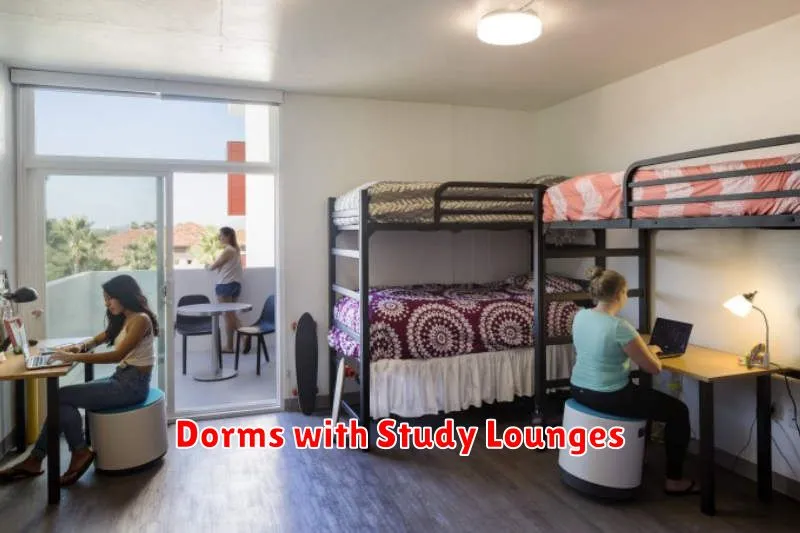
For students seeking a balance between social interaction and focused study, dorms with integrated study lounges offer an ideal solution. These communal spaces provide a dedicated environment conducive to academic pursuits, eliminating the distractions often found within individual dorm rooms.
Benefits of Study Lounges: Study lounges foster a sense of community among students, allowing for collaborative learning and peer support. They also offer a change of scenery from the confines of a dorm room, promoting better concentration and productivity.
Key Features: Well-designed study lounges typically include comfortable seating, ample desk space, reliable Wi-Fi, and abundant natural light. Some may also offer printing facilities and private study rooms for individual or small group work.
Considerations: When considering a dorm with a study lounge, assess the lounge’s accessibility, hours of operation, and overall atmosphere. Ensure it aligns with your study habits and preferences.
Green and Sustainable Dorms
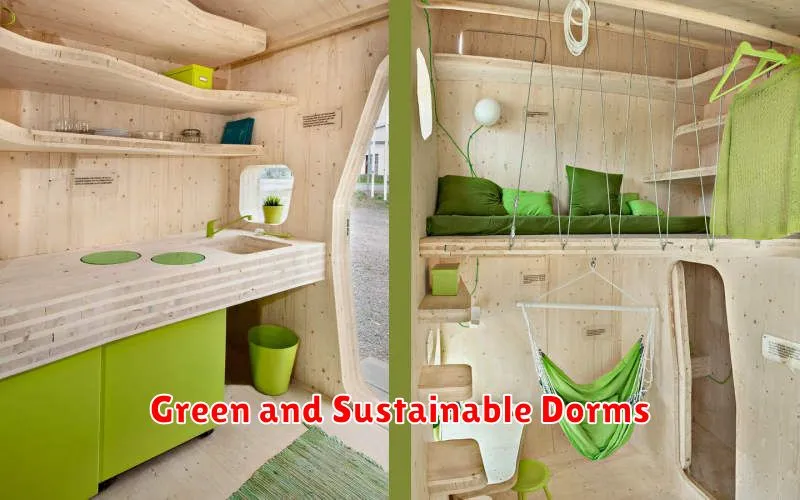
Sustainability is a key concern in modern dormitory design. Green dorms aim to minimize environmental impact while providing comfortable living spaces. These designs incorporate several key features.
Energy Efficiency
Energy-efficient buildings utilize strategies to reduce energy consumption. This can include improved insulation, high-performance windows, and the use of renewable energy sources like solar panels.
Water Conservation
Water conservation is another important aspect. Low-flow fixtures, rainwater harvesting systems, and drought-tolerant landscaping contribute to responsible water usage.
Waste Reduction
Minimizing waste is a core principle. This involves promoting recycling programs, composting initiatives, and utilizing sustainable building materials with recycled content.
Indoor Environmental Quality
Green dorms prioritize indoor environmental quality. This includes ensuring proper ventilation, using low-VOC paints and furnishings, and maximizing natural light.

